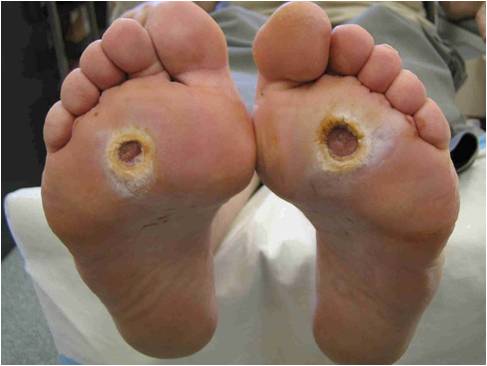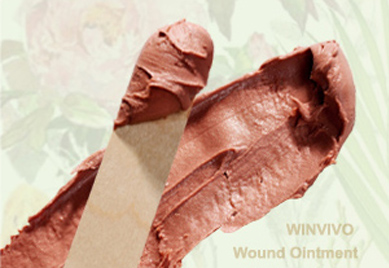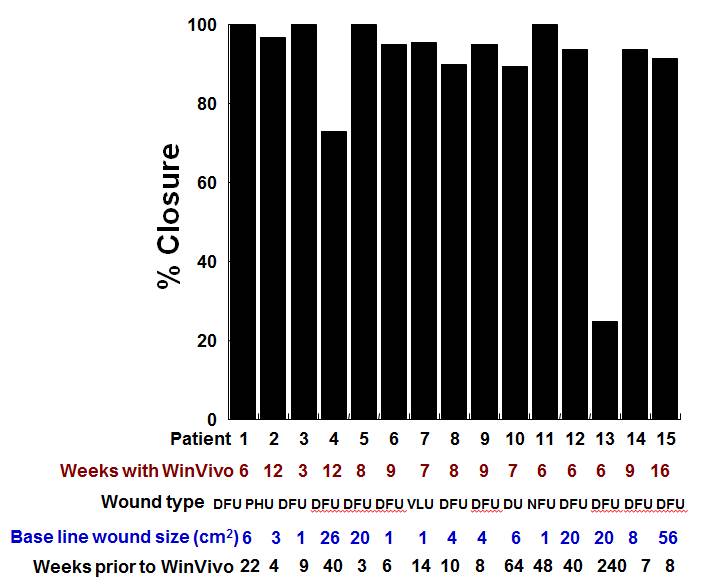Podiatric (Foot/Ankle) Conditions
 "[In 1995] Among 16 million patients with diabetes (diagnosed and undiagnosed) in the United States, there are an estimated 1200 amputations performed each week, 84% of which are preceded by a foot ulcer. Limb amputation in patients with diabetes is associated with an increased risk for further amputation, which has a 5-year mortality rate of 39% to 68%. The direct costs of these lower-extremity amputations in patients with diabetes range from $20000 to $60000."
"[In 1995] Among 16 million patients with diabetes (diagnosed and undiagnosed) in the United States, there are an estimated 1200 amputations performed each week, 84% of which are preceded by a foot ulcer. Limb amputation in patients with diabetes is associated with an increased risk for further amputation, which has a 5-year mortality rate of 39% to 68%. The direct costs of these lower-extremity amputations in patients with diabetes range from $20000 to $60000."
— Eckman MH, et al. (1995) “Foot infections in
diabetic patients: decision and cost-effectiveness
analyses.” JAMA, 273:712-720 . Emphasis added.
Podiatric care focuses on preventing, diagnosing, and treating disorders of the foot, ankle and lower leg. More than 75 percent of all Americans will experience foot and ankle problems of varying degrees at one time in their lives. Podiatric conditions include foot and ankle injury, diabetic foot ulcer, peripheral neuropathy, toenail fungus, athlete’s foot, ingrown nails, neuroma, etc.
Diabetes has become an epidemic in the United States. The number of those affected has doubled over the last decade, reaching 30 million people. The growth of diabetes worldwide is also alarming. The World Health Organization (WHO) expects the number of new diabetes cases to double in the next 25 years from 135 million to nearly 300 million. Much of this growth will occur in developing countries where aging, unhealthy diets, obesity, and sedentary lifestyles will contribute to the onset of the disease.
Ulceration is a common occurrence with the diabetic foot. A diabetic foot ulcer is an open sore or wound that most commonly occurs on the bottom of the foot in approximately 15 percent of the population with diabetes. Constant pressure load on the foot cause repetitive micro-trauma, leading to an ulcer that fails to heal.
Besides diabetes, risk factors for developing foot ulcers also include peripheral neuropathy, foot deformities (hammer toes, hallux valgus, or Charcot foot), rheumatoid arthritis that increase plantar foot pressures on weight bearing, most commonly under the metatarsal heads.
Of those who develop a foot ulcer, 6% will be hospitalized due to infection or other ulcer-related complication. Diabetes is the leading cause of non-traumatic lower extremity amputations in the United States, and approximately 14 to 24 percent of patients with diabetes who develop a foot ulcer have an amputation. According to a recent survey, about 86,000 lower limbs are amputated annually due to complications from diabetes.
Such grim consequences could be avoided if proper care is taken.
Asian Wisdom for Taking Care of Foot Ulcers in a Holistic & Synergistic Way:
- Employ botanicals with broad-spectrum anti-microbial properties to protect wound bed from infection and to inhibit growth of microorganisms on the foot;
- Employ naturally anti-inflammatory and analgesic botanicals to suppress pain resulting from the nerve endings being sensitized by prostaglandins produced in the process of inflammation, as well as the pressure on tissue resulting from edema;
- Combine with botanicals that promote microcirculation of the low extremities to allow fast drainage and tissue regeneration;
- Dress the ulcer with a thick layer of herbal paste or ointment to absorb exudates and soften necrotic tissue to be removed non-invasively; and
- Change dressing with minimal disturbance of regenerated nascent tissue to enhance the quality of healing and reduce scarring.
By using such a synergistic combination of antimicrobial, anti-inflammatory, circulation-promoting botanicals, infection and pain of wound can be controlled effectively, necrotic tissue removed less invasively, thereby promoting angiogenesis, granulation and epithelialization, leading to faster healing of the foot ulcers.
Note:
Please be advised that the information presented above is not to be used as a substitute for medical advice, diagnosis or treatment of any disease. Statements made about products have not been evaluated by the Food and Drug Administration. Viewers should not rely solely on the information provided on this web site for their own health problems, and are advised to consult with their physicians or other healthcare providers.
WINVIVO Wound Ointment:
Multi-Functional Botanical Therapy
- Difficult-to-Heal Wounds


Privacy Policy | Disclaimer | Knowledge Garden Disclaimer | Return Policy | Contact Us | Affiliate Program
© 2009-2013 WinVivo Corporation All Rights Reserved



